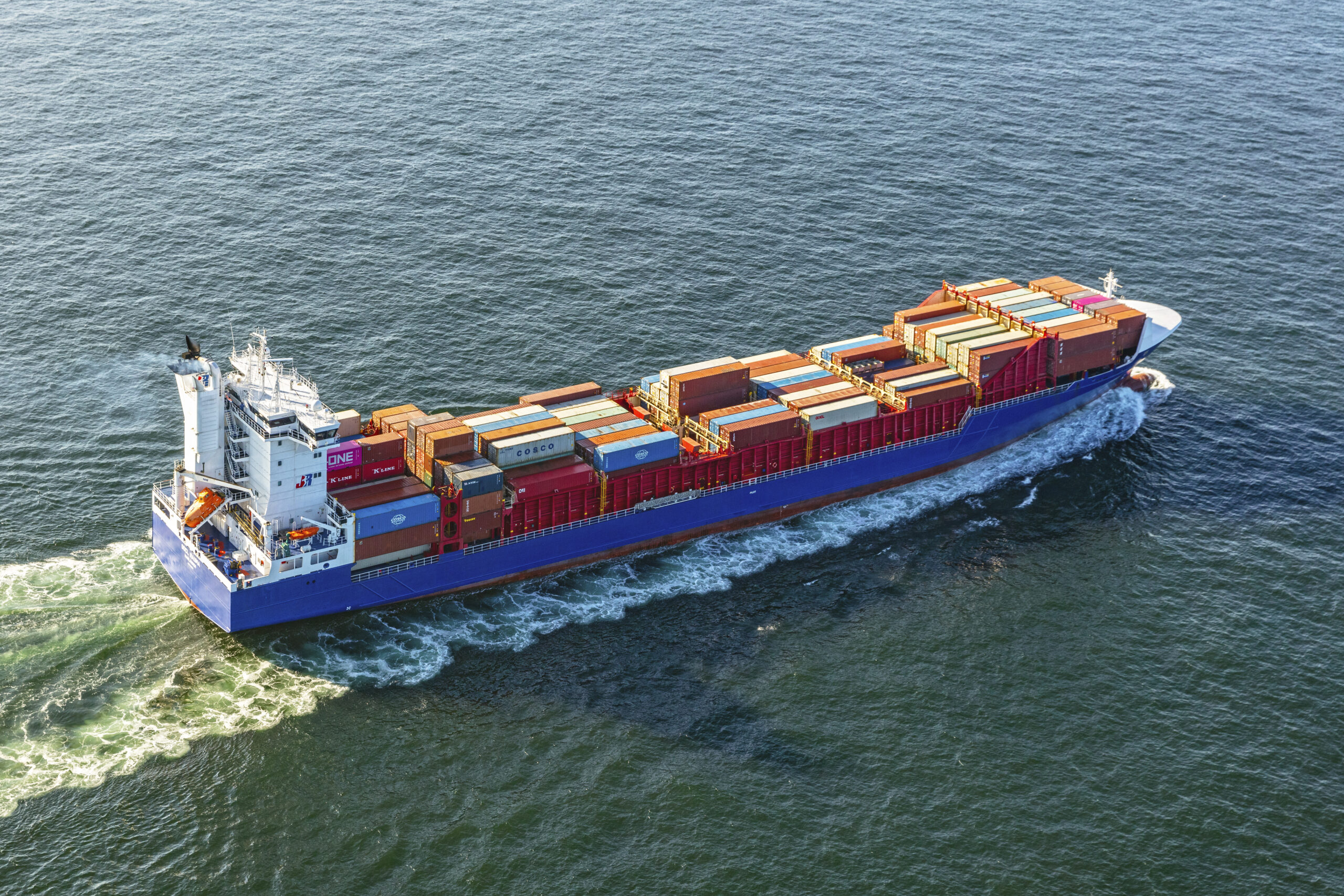PARTNER INTRODUCTION
JR Shipping
Dedicated sustainable short sea shipping partner.
We are proud to announce that JR Shipping is the latest organisation to join the Maritime Remanufacturing Network. From exhaust gas filter system to carbon capture: sustainability is playing an ever-important role in the strategic decisions made by JR Shipping. But that’s not all: a JR Shipping vessel is going to be first to install remanufactured equipment (the MRN’s inaugural bow thruster project). We interviewed JR Shipping Director of Ship Management Robert-Jean Dupuis to find out more.
“ If you look at the whole energy transition that the shipping industry is going through at the moment – towards reducing emissions – I think this is the biggest industrial challenge we have faced since the formation of shipping group JR Shipping more than 30 years ago.”

Can you give us a brief introduction to JR Shipping?
We operate a fleet of 15 container feeder vessels, which focus on the shortsea sector, and seven crew transfer vessels, which serve offshore industries. We also manage the three-masted clipper Stad Amsterdam. This means we have about 40 Dutch crew and more than 300 foreign crew in service.
What does sustainability mean to JR Shipping?
We put this on our agenda about eight years ago and this has only become more relevant for us since then, especially linked with the larger subject of ESG [Environment, Social and Governance issues]. If you look at the whole energy transition that the shipping industry is going through at the moment – towards reducing emissions – I think this is the biggest industrial challenge we have faced since the formation of shipping group JR Shipping more than 30 years ago.
What does JR Shipping do to increase the sustainability of its operations?
We look at our footprint as well as the footprint of the third parties we work with. And at what we can do to improve sustainability throughout our whole organisation – not just in our vessels. For example, almost all of our personnel drive electric cars, which are charged from the solar panels we have on our offices. On our vessels, we are trialling a new carbon capture with our exhaust gas filter system. We have also installed a SaaS warning system on board eight container feeder vessels to drastically reduce the risk of environmental disasters, and we are pursuing the use of alternative fuel, for example HVO (Hydrotreated Vegetable Oil) 100 for our SeaZip fleet.
More information on the ESG policy and the steps our shipping group has since taken to increase sustainability are explained in our Sustainability Report (link: https://www.jrshipping.com/sustainability/).
“The subject of remanufacturing is inherently linked to sustainability so we saw this as an absolute necessity to get involved with the Maritime Remanufacturing Network.”
In your opinion, what are the main challenges facing companies that want to invest more in the sustainability of their operations?
Looking at the European shortsea feeder sector in particular – which is vital for the transshipment of the huge amount of containers from Asia and South America to smaller ports – the financial situation for the smaller ship owners is limited at the moment. This is due to the continuing effects of the economic crisis, which has meant that it is very difficult to get financing to build new – more sustainable – vessels. This comes on top of the uncertainty about the choice of sustainability options and still many unclarities in regulations and applications of sustainability options.
Do you see remanufacturing as one of the options? Especially to keep older vessels in service for longer?
The subject of remanufacturing is inherently linked to sustainability so we saw this as an absolute necessity to get involved with the Maritime Remanufacturing Network. Comparing the CO2 footprints of new components with remanufactured parts, it is clear that our maritime industry needs to take steps towards remanufacturing. After all, there is more than seven billion people on this planet and everybody needs to take responsibility for their actions.
What do you want to contribute to the Maritime Manufacturing Network?
Our contribution will be that we will be the first shipping company to install remanufactured components in an operational vessel. In the autumn of this year, MV Elysee (charter name: OOCL Rauma), one of our shortsea feeder vessels will go into dock for the installation of a remanufactured bow thruster. After this, we will be looking at the characteristics of the remanufactured system, seeing how it compares with our current systems.
What would you like to achieve with remanufacturing in the next few years?
It would be great if we can prove this works – all under the eyes of the Classification Society – within the next two or three years. Then we will be looking at repeating this concept throughout our fleet. For example, seven of our shortsea feeder vessels are a series of identical sister vessels, all of which are turning 20 in the coming years. Then we will see if we can use remanufactured bow thruster systems for all these seven vessels, exchanging parts vessel-by-vessel. And if we can do this with a bow thruster, then maybe in the future we can do it for other equipment like anchor winches or hatch cylinders. This takes us towards extending the life cycle of vessels by maybe 10 or 15 years. We are not there yet, but this is the idea that will help us get through the energy transition.
More information about JR Shipping: visit website

